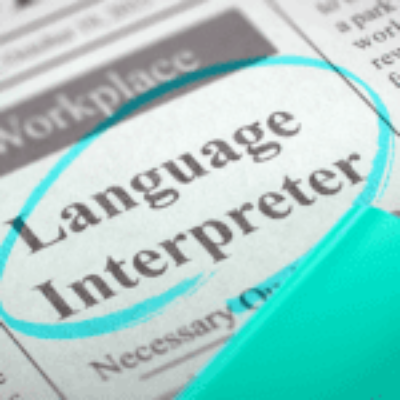
How Cristóbal Colón Became Christopher Columbus?
Christopher Columbus never actually existed. Neither did Cristobal Colón. These names are actually just the anglicized and Spanish versions of his birth name. So then, what is the real name of this well-known historical figure?
Who Was Christopher Columbus?
Christopher Columbus was likely born in Genoa, Italy in 1451 as Cristoforo Colombo. It is believed that Colombo was the son of Susanna Fontanarossa and her husband Domenico Colombo, a Genoese wool worker and merchant. Little is known of Columbus’s early life, except from what was found in Columbus’s testament of 1498 and archival documents from Genoa and Savona.
Genoa was an independent and rich city state located in modern-day Italy—and Italy itself didn’t exist as an independent country until 1861. However, Colombo soon left this area for its neighboring country of Spain.
His Legacy
In recent years, perspective and scholarship about Christopher Columbus has changed dramatically. Once a glorified hero, this explorer is now, more often than not, remembered for his part in the destruction of America’s indigenous populations.
Yet, this large character had humble beginnings. Columbus started his seafaring career in the Portuguese merchant marine. After surviving a shipwreck in 1476, he became a chart maker and entrepreneur.
In 1492, with the support of the Spanish monarchy, Christopher Columbus set off to find a new route to Indian from Spain’s western coast. Of course, you already know what happens next.
Columbus ran straight into America, rather than his Indian destination. This set off a chain of historic events that led to the colonization of the Americas, which had effects for the indigenous populations. It would take hundreds of years for these colonized states to free themselves into self-governing countries.
Whether you view him as a daring and path-breaking explorer, or a partaker in indigenous destruction, Columbus undoubtedly leaves a controversial legacy.

A Man of Many Names
It’s likely that Cristoforo Colombo changed his name to Cristóbol Colón soon after moving to Spain where he became a citizen. In the past, immigrants often changed their names when moving to a new country to help integrate themselves into a different culture and language. For example, as Europeans immigrated to the United States in its early years, they either anglicized their last names or changed them entirely! Christopher Columbus was probably no different.
However, Cristóbal Colón also goes by a different version of his name, depending on what language you speak. Here are a few examples of how his name is said around the globe.
- English — Christopher Columbus
- Spanish — Cristóbal Colón
- French — Christophe Colomb
- Swedish — Kristoffer Kolumbus
- German — Kolumbus
- Dutch — Christoffel Columbus
- Portuguese — Cristóvão Colombo
- Catalan — Cristofor Colom
Who knew one person could have so many different names!
Controversy Surrounding the Name
There is still some debate surrounding the origin of Christopher Columbus and his true birth name.
Names like Corombo and Colombo were very common in Italy, so most historians assume that this was his birth name. However, there is limited documentation of Christopher Columbus’s origin. This has led to the creation of other theories about Columbus’s real name.
In Latin, Columbus means dove while Christopher means Christ-bearer. This symbolism leads some to believe that Christopher Columbus picked this name because he liked what it meant, rather than as a way to alter his original name. In other words, his birth name might have been something entirely unrelated!
Additionally, not everyone believes that Columbus was born in modern-day Italy. Some claim he was born in Spain while others argue he was actually a Portuguese Jew with the name of Salvador Fernandes Zarco. There is even a theory that he adopted the name Cristoforo Colombo from a pirate named Colombo!
Ultimately, the true origin of this widely known name is still somewhat of a mystery.
Christopher Columbus is Everywhere
The name Christopher Columbus traveled even further than the man himself! Currencies, capitals, and even countries are named after this historic figure, especially in the Americas. Argentina, Bolivia, Colombia, Cuba, Dominican Republic, Ecuador, Nicaragua, Peru, Uruguay, and Venezuela all have cities called Colón. Meanwhile, the United States has over a dozen cities named Columbia.
Why are so Many Places Named After Such a Controversial Figure?
In the past, Columbus was not condemned for his actions, but rather glorified for them. He became the idealized symbol of New World discovery.
Christopher Columbus was also a symbol for the American Revolution. American colonists needed a heroic symbol for their new, independent nation. What better person to choose than the man who was credited with discovering the Americas himself? This led to many U.S. cities, streets, and even its capital city being named Columbia.
Columbus was also a way to distract from America’s original inhabitants. Rather than teach about the indigenous peoples, American history used to be taught starting with Columbus’s trip in 1942. Times have since changed but the effects have not. Christopher Columbus’s name continues to reside across the Americas.
Here are a few more examples of important places and objects that took on the Columbus name.
- South American Country — Colombia
- Capital city of the United States — District of Columbia
- Costa Rican currency — colón
- Province of Canada — British Columbia
- NASA Space Shuttle Orbiter — Columbia
- Largest city in Panama — Colón
Speaking of Names…
Christopher Columbus’s ships actually weren’t named La Niña, La Pinta, and La Santa Maria like your third-grade teacher taught you. Two of these names were actually just nicknames for the ships!
During Columbus’s time, Spain had a tradition of naming its ships after saints, but referred to them by a nickname. For example, La Niña was likely a nickname for a ship called La Santa Clara, or Saint Clara. The ship’s owner, Juan Niño, is likely where the nickname La Niña came from. However, historians are unsure what the original name for La Pinta is. La Santa Maria, however, was the true name for the third ship. It had a nickname as well, La Gallega.
What do You Believe?
The name Christopher Columbus has undoubtedly spread far and wide. Yet, the details of its true origin may have been lost in history. What do you think his real name was? Share your thoughts in the comments below!

Want to learn more about Latin American culture? Check out our latest posts!
- The Best Spanish Learning Podcasts for Kids
- 12 Contemporary Spanish Female Artists Who Will Empower You
- The History and Significance of Guatemalan Jade
- Are Bilingual Children More Likely to Experience a Speech or Language Delay?
- Top 10 Places to Visit in Guatemala City, Guatemala
- Learn About Hispanic History: Were Hispanics Slaves?
- Celebrating Culture and Joy: The Magic of Carnival in Spanish-Speaking Countries
- 15 Mouth-Watering National Dishes of Latin America
- How to Talk About the Temperature in Spanish: Fahrenheit, Celcius, and Descriptions - February 8, 2024
- How To Use the Spanish Verb ‘Parecer’ - February 12, 2023
- How To Write Dates in Spanish - January 28, 2023




